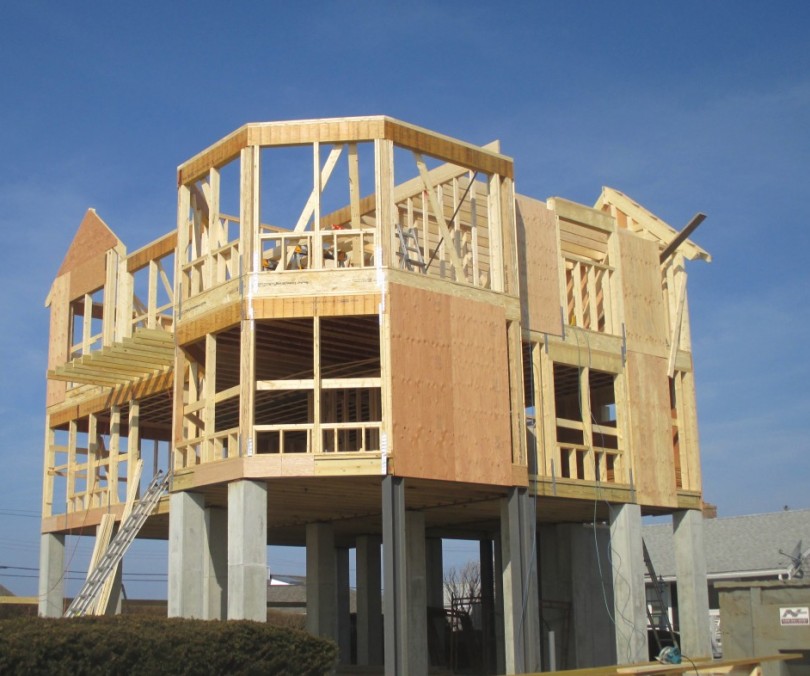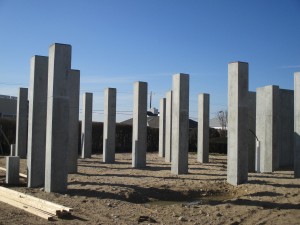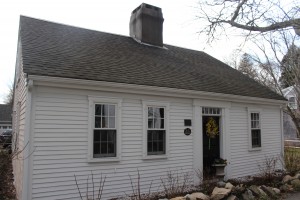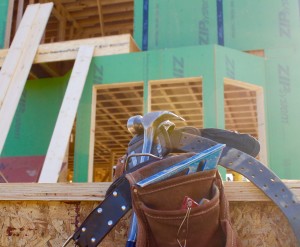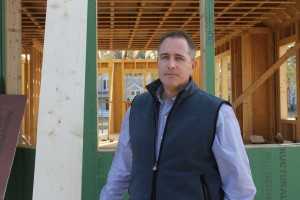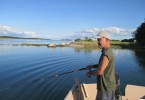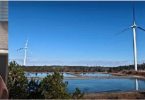Start with the land, or what’s left of it.
“We’re into the redevelopment of Cape Cod, not the building of Cape Cod,” said Christine Duren, executive officer of the Home Builders & Remodelers Association of Cape Cod. “There’s still land,” she said, “but it’s rare.”
Vacant buildable land, in large supply on Cape just a few decades ago when some of the current generation of home builders were young, has indeed become rare. Yet the building industry, one of the pillars of the Cape’s economy, seems to be doing well.
“We have 275 member companies representing about 4,000 jobs,” said Duren. “Just about every one of our builders are looking for help and can’t find it.” She added, “I know everyone is busy.”
What has changed is what they are doing.
“Our company does 80 percent new construction,” said Matt Teague, president of REEF of Dennis. “Ninety percent of that is a teardown of an existing structure.”
“Ninety percent of what we do is takedown and rebuild versus new.” — Mike Duffany
According to Duren, the association, which had been called the “Homebuilders Association of Cape Cod,” recently added the word “Remodelers” to their title to be more accurate.
And Mike Duffany, president of of M. Duffany Builders of Falmouth, said “Ninety percent of what we do is takedown and rebuild versus new… Our wheelhouse is big renovations.”
It seems to be a common wheelhouse. Almost always, what is built is much bigger than what was torn down. The reasons are varied, but the changes are keeping the building industry on Cape Cod busy.

Matt Teague: “We might be building ourselves into a bunch of houses that don’t allow normal people to live here.”
“It’s going to be interesting to see what this place looks like in 20 years from now,” said Teague. “I think we’ll continue to see a lot of demand for the premium location.”
This means that pockets of the Cape are slowly remaking themselves into high-end housing.
As Teague said, “We might be building ourselves into a bunch of houses that don’t allow normal people to live here.”
Yet other things are possible as well.
“Density and height. That’s the next frontier,” said Paul Niedzwiecki, Executive Director of the Cape Cod Commission.
“Our members build what they are allowed to build,” said Duren. “They’d be thrilled to build higher-density cluster housing.”
![]() ** Please support independent local journalism.
** Please support independent local journalism.
See the DONATION BUTTON AT THE TOP OF THE PAGE **![]()
“If it could have been easily built on,” said John Bologna, CEO of Coastal Engineering of Orleans, “it’s probably already built. All the good stuff has been picked and culled through.”
So what is left that can be built upon?
“There are about 20 different ways to look at it,” said Niedzwiecki. “Trying to differentiate what’s buildable or not, and considering the pressure to build on marginal lots” can change the answer, he said.
But Niedzwiecki pointed out that two huge pieces of land – the Cape Cod National Seashore on the Outer Cape, and Joint Base Cape Cod on the Upper Cape – will not be developed.
And Bologna said, “If you go up in an airplane and look down, you see a lot of trees. On a house lot, the house only occupies 15 percent of the land.”
Cape Cod, in other words, is not Levittown.
And the land that is left is not the large parcels waiting to be subdivided. “New construction, in terms of building developments, those days are over,” said George Davis, owner of George Davis Inc. of South Yarmouth.
“More likely it would be a teardown,” said Davis. “A cottage that a client might be thinking they’d like to renovate but they rapidly come to the conclusion that it makes more sense to tear it down and start over.”
Teardown and rebuild. That’s how much land is left, apparently.
But there are exceptions to rules and one exception is in New Seabury, which is putting up a large development of about 200 houses, said John Falacci, project manager for Bayswater Development, which is developing New Seabury.
“We do have land,” said Falacci. “What helps us is we have a special permit that was issued in 1964.”
New Seabury’s zoning allows it to build cluster housing with large sections of open space, Falacci said, “Out in the field, there are days when we have hundreds of workers.”
“Back in the 80s,” said Ralph Cataldo, president of Cataldo Builders of East Falmouth, “the size of the houses were small. They were affordable.”
House prices, he said, were $69,900, “with the land. And then it went up to ninety-nine nine, with the land,” said Cataldo, describing 1,200-square-foot Capes and ranches. “The land was cheap back then. The land was everywhere, he said.
“Everybody was building spec houses towards the end of the 80s,” said Cataldo. “The local schoolteacher was building a spec house. Things were selling before you cut down a tree.”
Duffany said, “Back in those days, you would have found a job with a builder doing tract development.”
“Everybody was building spec houses towards the end of the 80s. The local schoolteacher was building a spec house. Things were selling before you cut down a tree.” – Ralph Cataldo
Duffany remembers the town of Falmouth putting a moratorium on building more than 250 houses a year. “It got so hot and heavy. We were just building too fast,” he said of the town.
But, said Cataldo, “There was too much supply. Everything was for sale. It caused everything to stop… Some of the people that were building spec houses went upside down under water. Some went bankrupt.”
In the early 1990s, said Cataldo, “the big companies dramatically reduced their staff to a skeleton crew. I remember layoffs like crazy,” he said.
But Niedzwiecki said there was a lot of pressure on land use in the 1990s. “The peak was the mid-90s,” he said.
The pressure lessened around 2000, said Niedzwiecki, citing the Cape Cod Land Bank, established in 1998, as one step that slowed development. “There was a drop-off (in development) of a couple hundred units a year,” he said.
Development slowed each year, and then the major recession of 2008 deeply affected the building industry.
According to the Homebuilders & Remodelers Association of Cape Cod, the number of new home permits (including rebuilds and multi-family), were declining slowly before dipping significantly in 2008 to a low in 2009 of only 315 permits on the entire Cape. Since then the number has risen slowly and in 2014, 553 new home permits were issued in the Cape’s 15 towns.
“So many people left the trades after 2008,” said Duffany. This was especially true for young workers just getting started and older workers nearing retirement, he said.
And while the economy has rebounded and the work has come back, it’s different than before. The old cliche about not making any more land rings especially true on Cape Cod.
“Our forte is the remodel/renovation market,” said Duffany. “It’s what kept this trade alive. The guys that lived by new homes have died by new homes. When (the new home market) goes, it goes completely for a couple of years.”
“Many people in the trades who identified themselves as primarily new home builders are probably not identifying themselves that way any more,” said Davis, who described his company as a “design, build, renovation firm.”
“We’re not really developers here on the Cape,” said Duren. “But the rebuilds are on the upswing. More and more people are staying in their houses and looking to remodel.”
Remodel or tear it down and start over.
![]() The New Kind Of “Cape Cod House”
The New Kind Of “Cape Cod House”
“The cost of building a new home has become so expensive that it’s become almost entirely a luxury endeavor,” said Teague.
So in much the same way that it is odd that codfish are no longer caught off of Cape Cod, it is also peculiar that there are not a lot of Cape Cod houses being built here.
“Eight or ten years ago, this company built a lot of small Capes or colonials,” said Tegue. “Something affordable for a small family. Nowadays, that is few and far between.”
Instead, it is the Capes and such that are being torn down and replaced with something bigger, more custom and more expensive, especially because of recent changes to regulations.
In the last ten years, said Duffany, regulations “have caused the price of a home to escalate so it’s more of a custom home atmosphere.”
In much the same way that it is odd that codfish are no longer caught off of Cape Cod, it is also peculiar that there are not a lot of Cape Cod houses being built here.
And Cataldo said, “The building code dramatically increases the costs when a house is within one mile of the ocean.”
And green energy initiatives have also led to skyrocketing costs, said Teague. A house that used to cost $8,000 to insulate now costs in excess of $30,000, he said.
Some changes, said Teague, “are driving renovations of old homes out of the market. The required upgrades are forcing people to tear down and rebuild.”
In addition, Teague said, “Material costs have increased about one percent a month coming out of the recession.”
Times have simply changed, said Bologna. Whereas a family used to, for instance, share one bathroom in a house, now if there are two kids “they have to have Jack and Jill bathrooms,” he said.
So materials cost more, zoning is making things more expensive, and buyers want a bigger house. “There are different drivers to the housing demands,” said Bologna.
“My niche is high-end homes,” said Cataldo. “One-of-a-kind high-end homes. Our average home size is 7,000 square feet. We work for people where the economy affects them, but not as much.”
Teague compared the changing market for new houses to a market for new cars in which for years some people wanted a Ford, some wanted a Chevrolet and some wanted a Cadillac “but all of a sudden people came in and said they only want a Mercedes.”
“Boston ran out of land a long time ago, but there’s plenty of construction there,” said Falacci. “Cape Cod is not going to become Boston, but there will be redevelopment and remodeling.”
As Davis said, “All that new construction that took place 20 to 25 years ago will begin to need renovations.”
It’s easy to imagine that such work will continue.
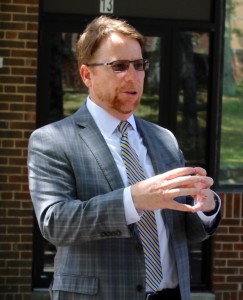
Paul Niedzwiecki: “Single family homes built on two-acre lots is not a sustainable type of construction pretty much anywhere.”
And Bologna said that the Cape has an aging infrastructure of public buildings such as schools, police stations and fire stations that need upgrading. But, he added, “Once it’s updated, you’re not going to need another one for 50 years. These things go in cycles.”
The cycle of tract housing development has essentially ended on Cape Cod. Required two-acre zoning to protect ground water hastened the process. As Niedzwiecki said, “Single family homes built on two-acre lots is not a sustainable type of construction pretty much anywhere.”
But generational and migratory turnover of people on the Cape will create new opportunities for builders. “Nothing stays young forever,” said Niedzwiecki. “Things evolve, people’s taste’s change.”
In general, this is good for the Cape building community.
But Niedzwiecki cited a need to “build the kind of housing we need.”
“That’s the big discussion,” he said. “We’re redoing the regional policy plan. The big discussion is going to be housing.”
The way to get less expensive housing, said Niedzwiecki and others, is with density. “We have a lot of single family homes,” said Niedzwicki. “Thirty-five percent of them are second homes and not used year round. When you get out into some of the outer Cape towns, it’s 70 percent. We need a style of housing that is not available on the Cape right now.”
The hope, said Niedwiecki, is for the Cape to begin to allow for buildings more than one story high allowing, for instance, housing on the second floor of commercial buildings. As with many issues on the Cape, it comes down to wastewater, he said.
“The cost of sprawl, in terms of infrastructure, is very expensive,” said Niedzwiecki, who said the idea for sewering is “to get as many people on as short a length of pipe as possible.”
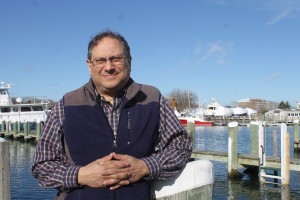
John Bologna: “It’s the law of unintended consequences. To prevent urban sprawl, they created urban sprawl.”
“It’s important to get more housing, and the kind of housing that we need,” said Niedzwiecki.
Bologna said that much of Cape Cod’s sprawl was by design. “Town planners didn’t want to have high density… It’s the law of unintended consequences. To prevent urban sprawl, they created urban sprawl,” he said.
Bologna, who lives in Harwich, said the town is looking at developing a growth incentive zone with some higher density, allowing landowners to swap development rights of land the town doesn’t want developed in order to build in these zones.
The idea is to have the growth “concentrated in centralized areas. Going back to the historical New England towns,” said Bologna. “Well they had all these meetings and as they were talking at one meeting, one fellow raised his hand and said, ‘I left Connecticut to come here because there is too much sprawl in Connecticut.’ ”
That attitude, said Bologna, is part of the problem. “Cape Cod has this insular attitude,” he said. “The last person over the bridge doesn’t want anyone else to come here. But that’s not the reality. You’ve got to grow, otherwise you die on the vine.”
Duffany agreed with the sentiments. “The towns need to be thinking more of higher density in the downtown areas.” But he was optimistic. “We’re seeing more workforce housing. That’s what’s going to keep the workforce here,” he said.
![]() Adjusting To The Times, Looking For Workers
Adjusting To The Times, Looking For Workers
The building industry, by all accounts, has adjusted to changing times. “Property maintenance is another dynamic keeping us all alive,” said Duffany.
“The second home market here on the Cape does promote that piece of the business,” said Duffany. “When I first started, there was very little of that. Now people want someone to keep an eye on their house.”
Cataldo said, “You’ve got to diversify to survive.”
In the current climate, builders are doing better than surviving. Many are actively looking for workers. The question in all of this becomes can the workers building these new kinds of Cape Cod houses that may be changing the character of this place afford to live here?
“We have 11 employees,” said Davis. “Most of them are homeowners. The cost of living on the Cape, of course, is high. It is an issue for everyone.”
Duren said of wages paid by members of the association, “I know some pay better than others. I will say you can make a living wage. Part of the problem is where are you going to live? Are there enough apartments here on the Cape you can afford?”
“A laborer that doesn’t know a thing can make 30 grand a year,” said Duffany. “Most guys are making 40 to 60 grand a year, if they are willing to work. And administrative and project managers make north of 60 grand.”
Duren pointed out, “It’s a demanding profession.”
It is especially tough for the unskilled laborer making at the bottom of the pay scale. As Teague said, “How long do you want to lift 2-by-12s up a ladder until you quit? It’s a tough profession.”
But for the skilled worker with a work ethic, it can be a rewarding profession.
“There’s plenty of work for the good guys,” said Cataldo. “There’s plenty of work for anybody that wants to work. But it’s very difficult to find young kids to learn and who have the work ethic most employers would like to see.”
As Duren said, “It’s hard to find workers who don’t spend time on their phone while on the job, or who actually show up on time.”
“The new dynamic we see with young people is they want to start at the top and go up from there,” said Duffany.
Falacci said, “There is a labor shortage of skilled workers… we’re short on young people.”
But for those who want to go into the trades, said those interviewed for this story, there are opportunities.
“If you have the work ethic, right attitude, and a little bit of skill,” said Cataldo, “you can find plenty of work on Cape Cod, and you can do very well.”
![]() The Trades Are Integral To Cape Cod
The Trades Are Integral To Cape Cod
“The building trades are an important part of the Cape economy,” said Niedzwiecki.
“It’s a huge economic driver,” said Duren. “And people don’t take into account the ripple effect.”
In other words, it is not just the people building the houses that benefit economically. “There are the soft costs of engineering and permitting,” said Duren. “And afterwards, there is furnishing and landscaping. A lot of jobs are created by building or remodeling a home.”
Bologna said, “The construction industry occupies a huge part of our economy. For instance, Mid-Cape Homes or Shepley’s might get ranked as retail, but they are a huge part of it. And truck drivers, designers, landscapers… there is a tremendous amount of spinoff just off that one house that gets built.”

The building industry is looking up on Cape Cod. This home is being constructed by Harbor Homes Building & Remodeling Inc.
Citing plumbers and masons, Duffany said, “There are a lot of ancillary pieces of the trades that get overlooked. You can make a decent living in a lot of these trades.”
As Falacci pointed out, “There’s always going to be a need for construction.”
And on the Cape, there will always be plenty of people working in that field. They are part of the foundation of this place.
“Everywhere you go, somebody is in the trades,” said Cataldo. “Go to a school function and look around the auditorium. Half those people in there are in the trades.”
![]() ** Please support independent local journalism.
** Please support independent local journalism.
See the DONATION BUTTON AT THE TOP OF THE PAGE **![]()
For more stories like this, see Longform stories
– Please like us on Facebook.
 A novel about Cape Cod, a softball team, and a large piece of land.
A novel about Cape Cod, a softball team, and a large piece of land.

